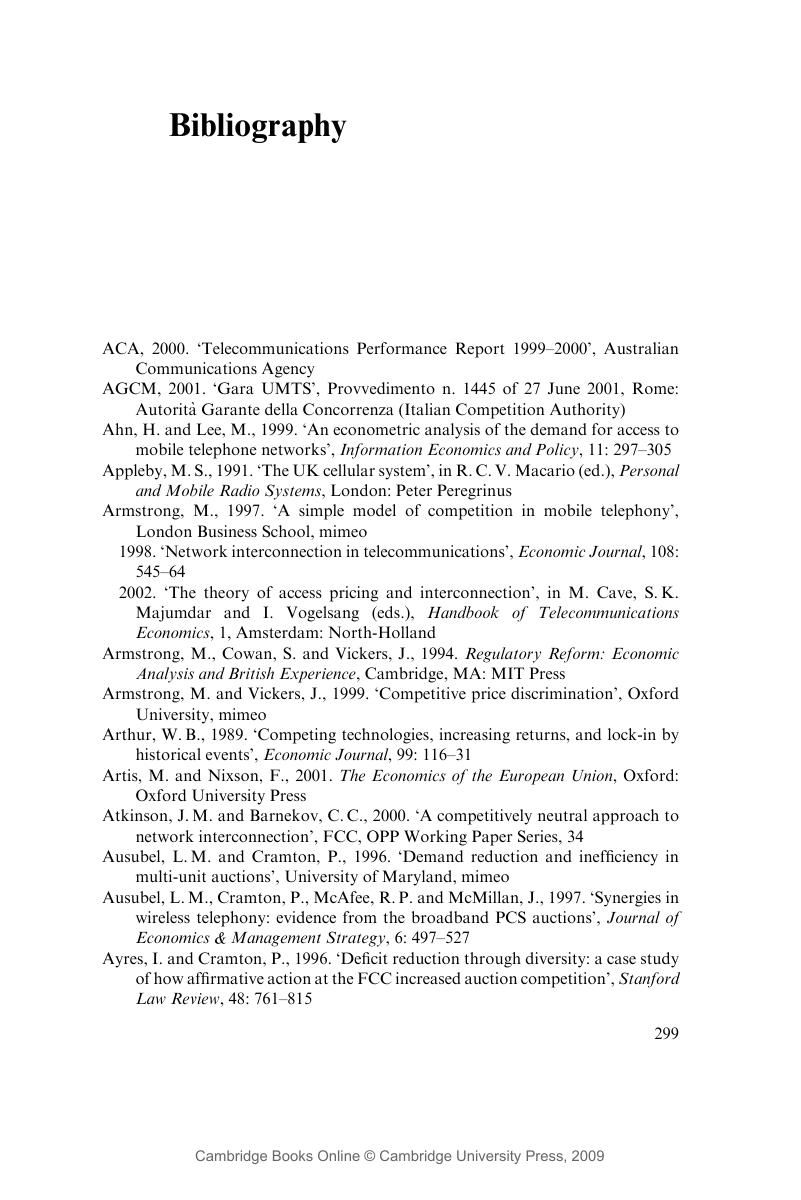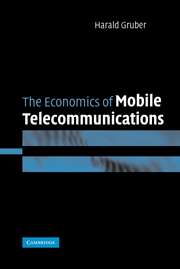Book contents
- Frontmatter
- Contents
- List of figures
- List of tables
- Preface
- List of abbreviations and acronyms
- 1 Introduction
- 2 Stylised features of the mobile telecommunications industry
- 3 The evolution of national markets for cellular mobile telecommunications services
- 4 The determinants of the diffusion of cellular mobile telecommunications services
- 5 Market conduct and pricing issues in mobile markets
- 6 Issues in radio spectrum management
- 7 The evolution of market structure in mobile telecommunications markets
- Appendix
- Bibliography
- Index
- References
Bibliography
Published online by Cambridge University Press: 22 September 2009
- Frontmatter
- Contents
- List of figures
- List of tables
- Preface
- List of abbreviations and acronyms
- 1 Introduction
- 2 Stylised features of the mobile telecommunications industry
- 3 The evolution of national markets for cellular mobile telecommunications services
- 4 The determinants of the diffusion of cellular mobile telecommunications services
- 5 Market conduct and pricing issues in mobile markets
- 6 Issues in radio spectrum management
- 7 The evolution of market structure in mobile telecommunications markets
- Appendix
- Bibliography
- Index
- References
Summary

- Type
- Chapter
- Information
- The Economics of Mobile Telecommunications , pp. 299 - 311Publisher: Cambridge University PressPrint publication year: 2005



